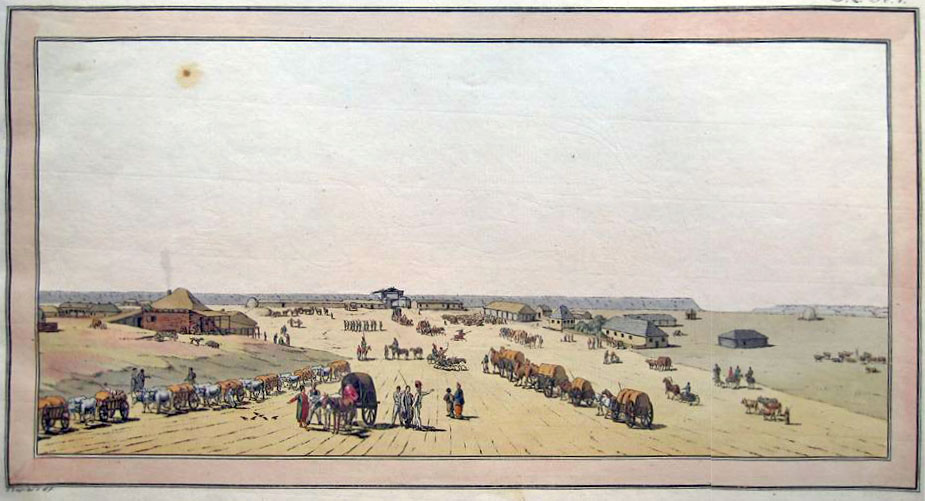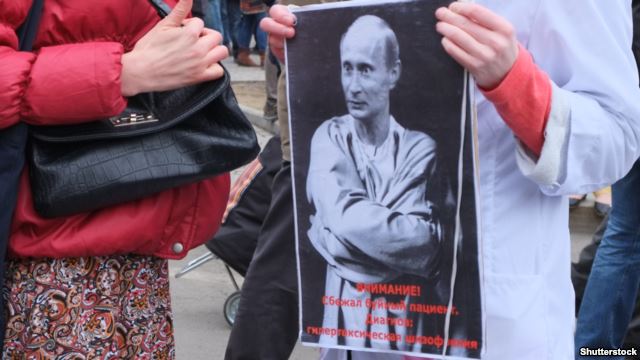“Greeks are the island’s indigenous people, they were there before you and me.”
– V. Putin
a) the ethnogenesis of Crimean Tatars began and occurred on the territory of Crimea:
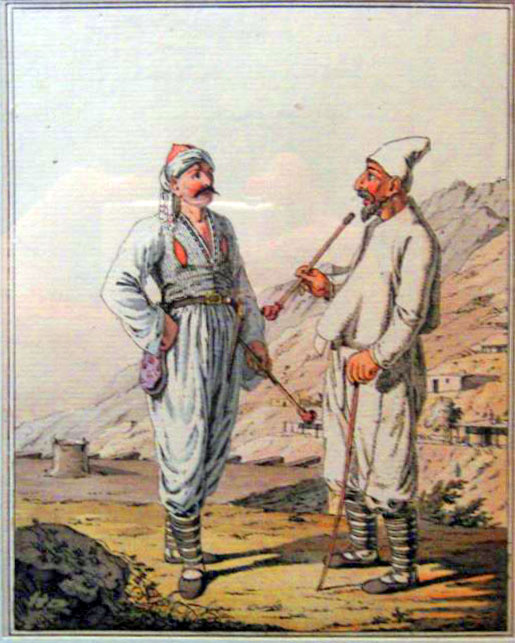
It is most difficult to fight the myth about ‘alien Tatars,’ because on part of the Crimean Tatars themselves, it is countered by another myth, and there has been absolutely no full-fledged scientific discussion regarding this problem. The only scientifically significant and weight work on this topic in Ukrainian historiography is L. Voytovych’s monograph The Formation of the Crimean-Tatar Nation.
Everything begins with the fact that ‘Crimean Tatars’ and ‘Tatar’ are far from being the same. It senseless to mention them in one list, just as it is senseless to compare ‘Slavs’ with ‘Ukrainians.’ Tatars in the broad sense are a wide group of peoples of various heritage, and in the narrow sense, it is either an ancient tribe from Mongolian steppes, or the contemporary nation within the Russian Federation, which is better names ‘Kazan Tatars.’ Essentially, the Crimean Tatars’ own name for themselves, kyrymly or krymtsy, does not indicate ethnic belonging at all. The myth surrounding them was encouraged by the terminological chimera, ‘Mongol Tatars,’ which allows to speculate on the Crimean Tatars’ heritage.
Another fundamental problem is the status of the indigenous nation. In the layman’s consciousness, the indigenous person is the one who lived on a certain piece of land first, and the rest do not count. Bt the way, in an attempt to round their rights to the status, part of Crimean Tatar publicists and, unfortunately, historians, resort to doubtful ethnological constructions, for example concluding that the Tauri had been the ancestors of the Crimean tatars (which is about the same as considering the people of Tripilya the ancestors of Ukrainians). However, in order to be considered an inidigeous people, a nation needs to only form on a given territory and have no other Motherland beyond its borders, and the time when ethnogenesis began has no significance whatsoever.
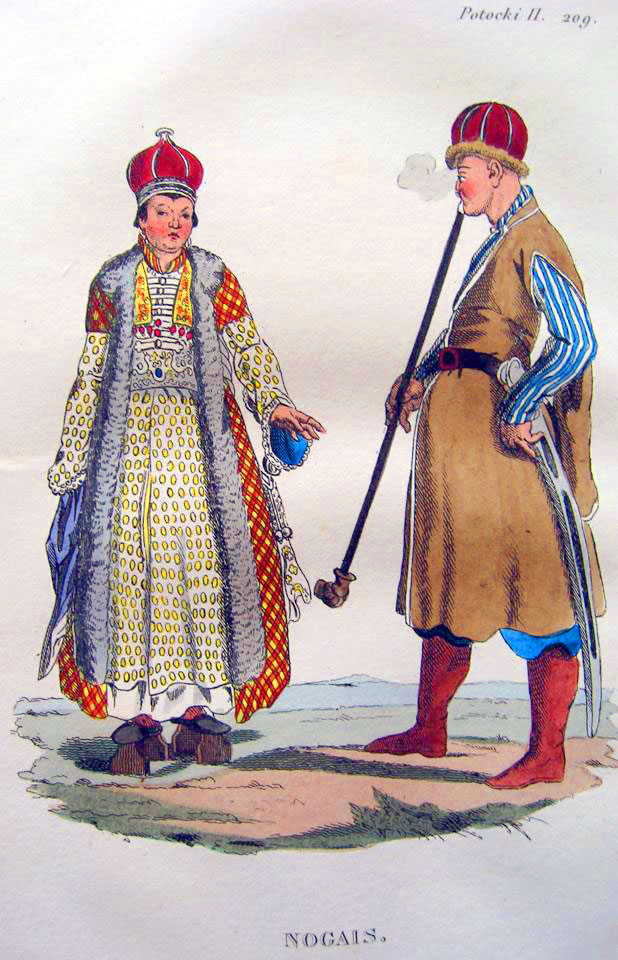
As such, the Crimean Tatars formed as an ethnicity in the 11-12th centuries on the territory of Crimea based on the local Cumans population with the inclusion of some of the Mongols and the settled mountain population. This is the explanation for the variety in the kyrymly anthropological types: from steppe mongoloids (where a significant mongoloid element was present) to the Mediterranean type of mountain-dwellers (Greek, Italian and Cherkess element). Among the Crimean Tatar aristocracy, there were frequent cases of light-colored hair and eyes, and they can still be encountered today. The attempts to trace their ethnogenesis to the Tauri, or, in the best case, the Huns are unconvincing and senseless, as the status of indigenous nations given to the Crimean Tatars, Crimean Karaites and the Krymchaks was never put under doubt by any serious researchers, and was finally documented at the state level recently.
Conclusion: Crimean Tatars are an indigenous nation that formed on the peninsula in 11-12th centuries from the local Cumans, some Mongols and Mediterranean nations, and which did not ‘wander in’ from Far-Eastern steppes. Crimea is the Kyrymly’s only Motherland, and attempts to deny their status as an indigenous nation are ignorance or a conscious provocation.
b) when you talk of the Greeks in Crimea, remember to say which ones!
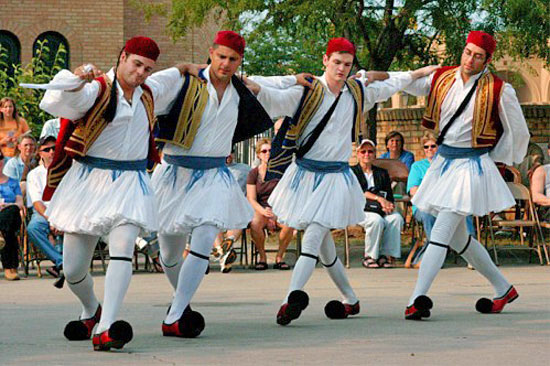
The typical mistake of V. Putin and those of his kin is to put all their Greeks in one basket. In reality, there were three entire waves of ‘Greeks’ in Crimea. The first ones are the classical Hellenic Greeks from ancient times, the contemporaries of Herodotus and the creators of democracy. They moved to Crimea since 600 BCE, some immediately mixed with the local barbarians, some preserved their ‘purity’ until the Roman times. After the Great Migration (from the 3rd century Goths to the 5th century Huns), it is senseless to speak of ‘pure’ ancient Greeks. The second wave is Medieval Romans, Byzanthians, ‘Crimean Greeks’ essentially, which have to similarity with the Hellenic Greeks neither in language nor in faith. These people gladly married the Christian peoples of Crimea and founded their own Principality of Theodoro together with the Goths and Alans. After the Turkish conquest in 1475, they either converted to Islam, having become part of the Crimean-Tatar ethnicity in time, or continued to live in small isolated Christian communities, until in 1778 they were moved by A. Suvorov to the Azov Sea, having become Mariupol Greeks. The third wave of Greek migrants are the refugees from the Ottoman Empire in the beginning of the 19th century, contemporary Greeks, who formed the Balaclava battalion and, as opposed to their predecessors, who conflicted with the local Tatars. However, both of them suffered the same fate – deportation in 1944. The contemporary Greeks of Crimea are the heirs of the repatriates of the third wave, so it is unlikely that we can say they had been in Crimea “before you and me.”

